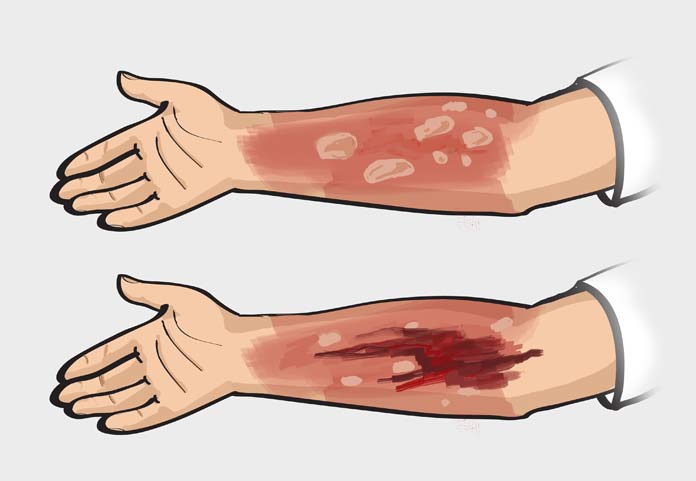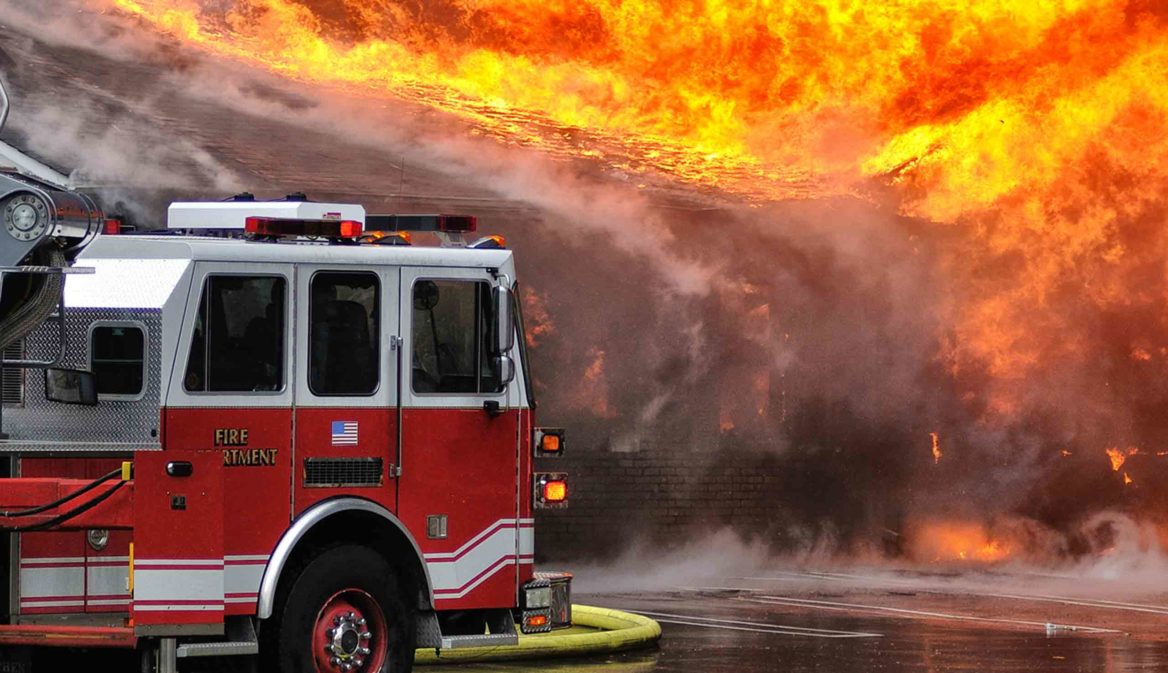Your thermal burn lawsuit should seek money to compensate you for pain and suffering, hospital bills and lost income. Our lawyers have obtained large settlements for people whose thermal burns caused severe disfigurement. Some of our clients have had their faces horribly burned and lost limbs. If you suffered thermal burns in a fire or explosion, you need a lawyer with experience getting multimillion-dollar settlements. Attorneys Fred Pritzker and Eric Hageman have won settlements over $10 million on behalf of clients. Contact them using the form below for a free consultation.

Thermal burns happen when heat is transferred to or from the body through conduction, radiation, or convection. Conduction is the direct transfer of heat from a heat source to the body, such touching a hot pan. Radiation is where high energy electromagnetic waves are converted to kinetic energy upon reaching our skin, which then damages the tissue. Convection is the process where heat is delivered through the air: an example of this is a flash burn from a propane explosion.
In some unusual circumstances, such as exposure to liquid nitrogen (-320 degrees F), very serious thermal burns can be caused by extreme cold and the tremendous amount of heat transferred away from the body.
The amount of damage to the body is determined by the following:
- the temperature of the heat source
- the duration of exposure
- the area of exposure.
At temperatures of 104-110˚F, enzyme function is inhibited, which explains why fevers over 104˚F are so dangerous. At temperatures of 140˚F for only 1 second, the injury is partial-thickness (second degree). When the temperature reaches 158˚F, protein in the skin is denatured, and it is full-thickness (third and fourth degree). As the duration of the exposure increases, increased damage occurs.
Thermal Burn Lawsuit Settlement
A thermal burn lawsuit settlement usually includes medical expenses, loss of earnings, disability, pain and suffering, emotional distress, and any other amount that would be considered necessary to compensate person for his or her losses. With these cases, pain and suffering is unquestionably horrendous, so the compensation for pain and suffering is often high.
In cases where the breach of duty was egregious or where there was intentional wrong done, punitive damages may apply. Punitive damages are monetary amounts that are meant to punish the parties who breached their duty of care.
If your loved one died, your family may have a wrongful death claim for the following:
- Funeral expenses
- Medical expenses, past and future
- Earnings, past and potential, that the decedent would have provided his loved ones if not for the wrongful death
- Loss of advice, care, comfort and companionship the deceased would have provided had he or she lived
- Pain and suffering of the deceased person experienced prior to death
- Punitive damages, upon clear and convincing evidence that the acts of the defendant showed deliberate disregard for the rights or safety of others.
Burns Classification
The American Burn Association determines classifies these injuries as follows:
- “Minor” – covers less than 15% of the body area (10% in the children and elderly) and is less than 2% third-degree.
- “Moderate” – covers 15-25% of the body area (10-20% in the children and elderly) and less than 10% third-degree.
- “Major” – covers over 25% of the body area (>20% in children and the elderly) or is accompanied by an inhalation injury or other trauma.
Also, any injury that could cause cosmetic or functional disability or that affects any sensitive area such as the face, eyes, ears, hands, feet, or genitals is considered major.
These injuries can be divided into three degrees, based on the amount of damage done.
First-Degree
These are quite minor, causing only temporary skin damage to the top layer of skin, the epidermis. The color of the skin changes to pink or red and maybe be very sensitive or painful. After 3-6 days, the damaged epidermis peels off, leaving scar-free, completely healed tissue underneath. Any treatment merely aims to alleviate discomfort.
Second-Degree
With these, the top layer of skin (epidermis) is destroyed and the dermis is also damaged, resulting in red or pale skin, increased or decreased sensation depending on the depth, and blister formation. Second-degree injuries take around 21 days to heal, and sometimes require skin grafts which then take more time to heal.
Third Degree
These injuries destroy all the layers of the skin, possibly causing even deeper damage. Because the skin is destroyed, it appears dry and leather-like, pale, red or spotty brown, and completely insensitive because nerves are destroyed as well. These usually require skin grafts and can take months to heal, with permanent disfigurement possible.
Fourth Degree
Occasionally, a fourth, fifth or even sixth degree is used to describe the injury. This is when there is damage to the muscle, bone or organs. These types of injuries are very severe, requiring skin grafts or amputation.
Free Consultation about a Burn Lawsuit
To contact a burn attorney at Pritzker Hageman, P.A., please call 1-888-377-8900 (toll free) or submit our free case consultation form.
If you retain our law firm to help you, we will immediately investigate your case. Because it is best to gather evidence soon after the incident, it is important to contact us as soon as possible.
Sources:
1. American Burn Association: Guidelines for service standards and severity classification in the treatment of injury, American College of Surgeons Bulletin 69(10):2-28, 1984.
2. Carrougher, Gretchern J. (1998). Burn Care and Therapy. St. Louis: Mosby Inc.

